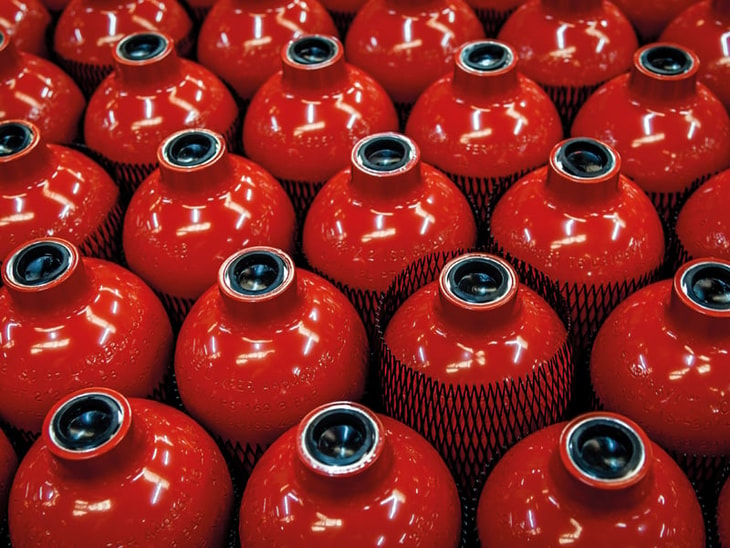Carbon dioxide (CO2), a clean, non-flammable, non-contaminating, and odorless gas, has been used to help suppress or extinguish fires for more than 150 years, initially as a propellant gas for water or chemical solutions and later as a gaseous smothering agent that deprives fires of oxygen necessary for ongoing combustion.
The first documented “fire extinguisher,” invented circa 200 BCE by Ctesibius of Alexandria, Egypt, was a hand pump that dispensed water. Most early fire extinguishers were various types of water-propelling pumps and plungers.
In 1813, English inventor George William Manby introduced his “Extincteur,” the world’s first portable, pressurized fire extinguisher: a copper vessel containing a three-gallon (13.6-liter) solution of water and potassium carbonate under compressed-air pressure. In 1866 in France, François Carlier patented a soda-acid extinguisher that mixed a solution of water and sodium bicarbonate with tartaric acid, producing CO2 gas as a propellant. In the USA in 1881, Almon Granger introduced an extinguisher that relied on the reaction between sodium bicarbonate and sulfuric acid to expel pressurized water. In 1904, Russian Aleksandr Loran mixed a solution of sodium bicarbonate in water with a solution of aluminum sulfate to create a CO2-propelled foam.
... to continue reading you must be subscribed







